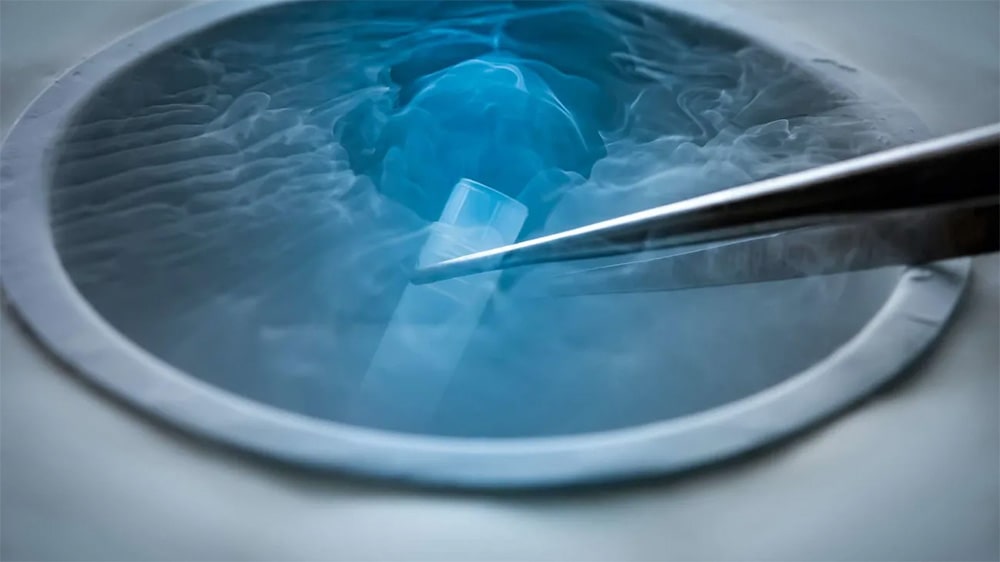What is Fertility Preservation or FP?
Preserving a woman's fertility by banking her eggs or embryos for later use. Fertilization: The fusion of the sperm and egg to form a zygote.
Fertility Screening and Preservation – Planning for the Future
There are few individuals – male or female – that don't think at some point in their lives about having children and raising a family. It is hardwired in the human genetic code. However, it has become increasingly more common to get "distracted" in life from these thoughts of procreation and family, pushing them out of our minds while we occupy ourselves with career and other various activities. Invariably, however, the idea of childbearing comes back.
The problem is that nature does not get distracted from its incessant negative effects on reproductive potential. The "Biological Clock" does not stop ticking for anyone, and for some individuals, it ticks much faster than they would hope or expect. This sounds horribly ominous! Nevertheless, it is true. The good news is that there are ways to pre-emptively address this reproductive aging process.
Here is the background for women: Even before birth, you are losing eggs from your ovaries. At birth, a woman has about 2 million eggs. By the time the first menses occurs at around age 11, she has about 400,000. In the mid-thirties, the rate of loss increases, such that by around age 50, there are none left. This is the onset of menopause.
Egg quality also declines as a woman ages. That is, the chance that any one egg will make a baby decreases as "the Clock" ticks. So with age come fewer eggs, and poorer quality ones at that. Though most people instinctively understand the concept of age-related fertility decline, very few of them understand that the decline starts a lot younger than is commonly thought – on average around age 27.
In the field of Reproductive Medicine, there are viable emerging techniques and technologies for egg freezing or "cryopreservation" (sperm cryopreservation has been available for decades). These technologies have recently undergone significant advances that dramatically improve live birth rates. We can now cryopreserve eggs for patients that are undergoing potentially damaging ovarian surgery and provide egg freezing for cancer patients prior to undergoing chemotherapy (both of which can negatively impact ovarian reserve and thus fertility future). These techniques also make it possible to freeze and store eggs for those that wish to preserve fertility or postpone childbearing for other personal reasons.
Embryo Banking
The introduction of Vitrification has opened up new possibilities for IVF treatment and fertility preservation. One dilemma that women face when considering IVF at a later age is the fact that they generally have fewer eggs available, and of those, a higher percentage are chromosomally abnormal. A new option that has great promise for halting the biological clock and aiding these women in conception is Embryo Banking. The basic premise is as follows: a woman undergoes 2-3 consecutive IVF stimulation and egg retrieval cycles without an embryo transfer. After each retrieval, the eggs/embryos are biopsied and frozen and the "competent" eggs/embryos are identified, the woman then schedules her embryo transfer using 1 or 2 of the competent embryos. This optimizes her chances of success, while minimizing the cost of testing and treatment.
Freeze the Biological Clock Multiple Egg Retrievals to Increase Yield Competent Embryos Identified by CGH Testing Schedule Embryo Transfer to Suit You.
Egg Freezing
Women who want to preserve their fertility for reasons of cancer treatment, career, or other personal choice, have faced a difficult barrier due to the poor success rates for egg freezing. Pregnancy rates for women using frozen/thawed eggs have been less than 4% for each individual egg frozen. This is due to the fact that; 1) at least 60% of eggs frozen are chromosomally abnormal from the outset and therefore cannot produce a normal embryo and; 2) traditional (slow) egg freezing techniques commonly cause ice crystal formation within the cell structure, reducing viability or destroying the cells in the process.
For Cancer Patients
It is largely through propagation of our biological offspring that we as humans feel we can leave a lasting legacy of our existence. Perhaps this explains why the desire to have children is a basic human instinct, and why an inability to achieve this goal (infertility) often leads to considerable psychological and social strain. Infertility evokes a strong sense of failure, loss, and helplessness, leading to one of life's most distressing crises.
According to an article published a few years ago in the Journal of Philosophy, Science and Law: "Seven out of ten children and young adults with cancer can be cured. Accordingly, by the end of this decade, an estimated one in two hundred and fifty adults will be survivors of childhood cancer." Unfortunately for many of them, one of the long-term risks of treatment is infertility.

